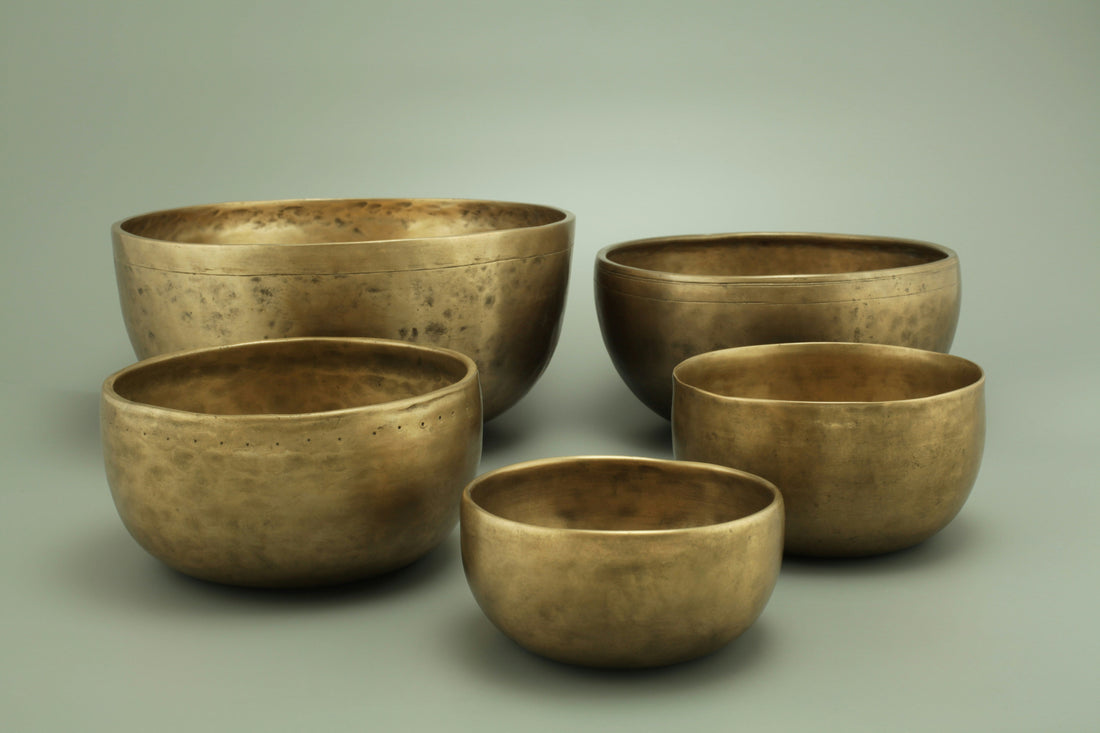
Beginners guide on choosing a singing bowl
Singing bowls are ancient instruments used for meditation, sound therapy, and healing due to their ability to produce calming, resonant sounds and deep vibrations. Traditionally linked to spiritual practices, they are now widely used for stress relief, emotional balance, and focus. Whether used in meditation, chakra alignment, or anxiety management, singing bowls have become a powerful wellness tool. However, for beginners, choosing the right bowl can be overwhelming due to the variety of materials, sizes, and sounds available. This guide aims to simplify the process by outlining key factors—such as material, size, and sound—so you can confidently select a bowl that resonates with your personal needs and preferences.
Factors to Consider When Choosing Your First Singing Bowl
When selecting a singing bowl, it's essential to consider several key factors that will influence your experience with the bowl, including the material, size, and sound. These aspects will directly affect how easy the bowl is to use, how it sounds, and how well it fits your intended purpose, whether it's for meditation, healing, or general relaxation.
Material
One of the first decisions to make is whether to choose a metal or crystal singing bowl, as each material has its unique qualities. Metal bowls, often made from an alloy of several metals like copper, silver, or iron, are more traditional and tend to be more durable. They are known for producing rich, deep tones with long-lasting resonance, making them ideal for meditation and healing practices. These bowls are also more affordable and versatile, making them an excellent choice for beginners.
On the other hand, crystal bowls, typically made from pure quartz, have gained popularity in modern times due to their ability to produce clear, high-pitched tones. They are often associated with chakra healing and sound therapy. However, crystal bowls are more fragile and expensive, making them a less practical choice for beginners who may be just starting to explore the world of sound healing.
Size
The size of the singing bowl is another crucial factor to consider. Smaller bowls, typically ranging from 4 to 8 inches in diameter, are often recommended for beginners due to their ease of handling and portability. These bowls are light enough to hold in your hands, making them easier to play and control, especially if you’re new to the technique of using a mallet. Smaller bowls also tend to produce higher-pitched sounds, which can be great for focusing the mind during meditation or for clearing emotional blockages. Larger bowls, while capable of producing deeper, more resonant tones, are heavier and can be challenging to manage, particularly for those just starting out. Therefore, it’s advisable to start with a smaller bowl that is easy to manage before moving on to larger, more complex options as you become more experienced. If you're just starting out, check out how to play singing bowls to get the most from your bowl.
Sound
The sound produced by a singing bowl is perhaps the most important factor in choosing the right one. Understanding singing bowl tones and frequencies can help you find a bowl that truly resonates with your needs.. Each bowl has a unique tone and resonance, and it's essential to select a bowl whose sound resonates with you personally. Metal bowls typically produce a wider range of tones and overtones, offering a rich, multi-layered sound, while crystal bowls tend to produce pure, higher-pitched tones. To find the bowl that’s right for you, try listening to a few options before making a purchase, whether in person or through sound clips if buying online. Pay attention to how the bowl’s vibrations make you feel, and choose one that evokes a positive emotional or physical response. Whether you're looking for a bowl with a deep, grounding tone or a higher-pitched sound for clarity and focus, finding the right sound is key to enhancing your meditation, healing, or relaxation practices.
Best Singing Bowl for Anxiety and Healing
When looking for the best singing bowl for anxiety, it's helpful to choose one that produces soothing, higher-pitched tones. These sounds tend to be calming and help clear emotional blockages, making them ideal for promoting relaxation and reducing stress. Smaller bowls are often better suited for this purpose, as their lighter, uplifting tones can help create a peaceful atmosphere, which is especially beneficial for those dealing with anxiety.
For healing purposes, bowls that produce low, grounding tones are ideal. These deeper tones can help anchor and balance energy, making them perfect for meditation, chakra healing, or physical relaxation. Larger bowls with rich, resonant sounds are often used in healing practices because their vibrations create a strong sense of calm and connection, which can promote emotional and physical well-being. Whether you’re using a bowl to reduce anxiety or support healing, the tone and vibrations play a crucial role in enhancing relaxation and emotional balance.
When purchasing singing bowls, it’s important to be aware of fake bowls that lack the authenticity and craftsmanship of traditional ones, especially those mass-produced without attention to detail. These imitations often fail to produce the rich, resonant tones of genuine bowls handcrafted by artisans. See our guide on fake singing bowls and how to spot the difference. Additionally, while sound healing offers many benefits, it’s essential to use it responsibly. Incorrect or overly intense sound therapy can cause discomfort or agitation, especially for individuals sensitive to sound vibrations.
Conclusion
Singing bowls come in various shapes, sizes, and styles, each offering unique sound qualities. For beginners, it’s important to find a bowl that is easy to play and produces pleasant, soothing tones. Smaller, lightweight bowls are often the best starting point, as they are easier to handle and provide higher-pitched sounds that are great for meditation and mindfulness. These bowls are typically more affordable, making them accessible to those just starting out on their sound healing journey.
On the other hand, larger bowls are known for producing deeper, more resonant tones that can be excellent for grounding and deeper meditative practices. However, due to their size and weight, they can be more challenging for beginners to use and are typically more expensive. While they offer a rich sound experience, starting with a smaller bowl allows you to gradually explore different types of tones and techniques before moving on to larger, more complex options.
At Mindful Store, we are proud to offer a carefully curated selection of authentic singing bowls that honour the craftsmanship and traditions of Nepalese artisans. Our collection is perfect for anyone seeking high-quality meditation tools, and as your trusted meditation store, we provide bowls that enhance your mindfulness practice while supporting traditional artistry. Whether you're just beginning your meditation journey or looking to deepen your practice, our range of singing sound bowls will provide the perfect balance of sound and beauty.
